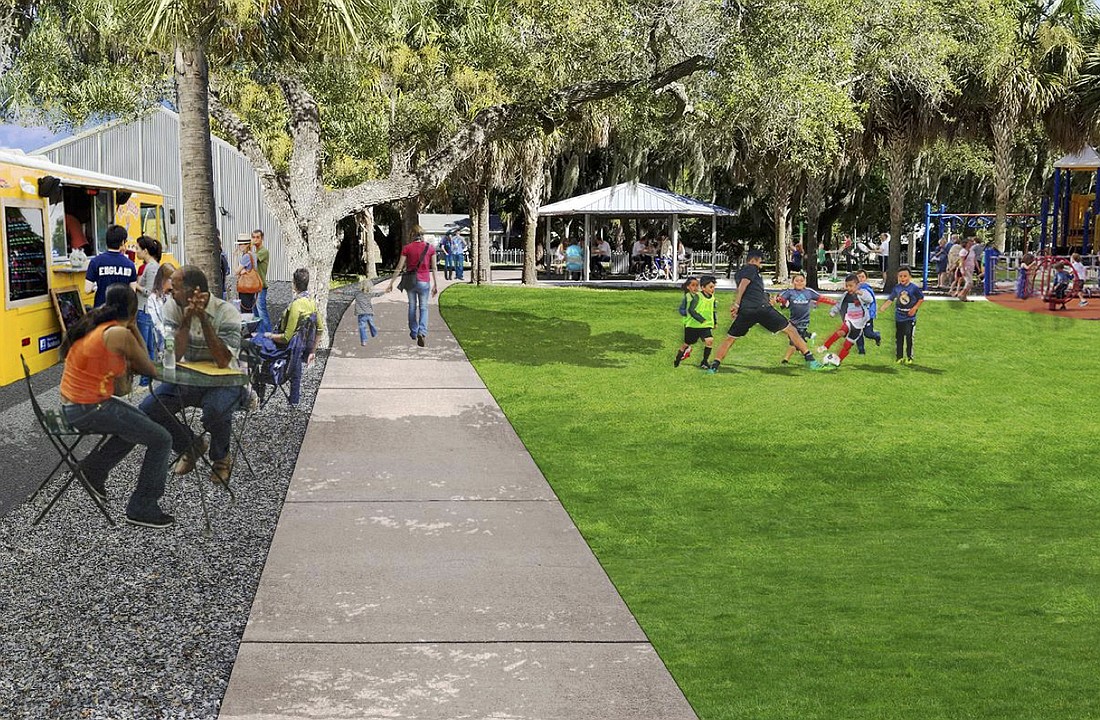- April 18, 2024
-
-
Loading

Loading

As the city discusses the future of the parks it oversees — and the potential expansion of its recreation offerings — a staff report says it will take nearly $18 million just to restore existing facilities to a satisfactory standard.
To improve parks beyond that level and address priorities identified in a community survey, staff has estimated the city will need to spend $32.1 million. Over the course of a decade, staff is proposing spending $50 million to begin implementing a parks master plan developed alongside an outside consultant.
Jerry Fogle knows that’s a big number. As the city’s parks and recreation director, he’s poised to assume significant responsibility should the City Commission pursue the recommended improvement initiative. But he thinks officials have an obligation to ensure neighborhoods citywide have access to quality park amenities.
Based on the conversations he’s had since taking his position in 2016 — and since staff began working on the master plan in 2017 — he thinks residents would be happy to see the city increase its investment in parks.
“What I’m getting from the community is that they fully support what we’re trying to do,” Fogle said. “I know that they definitely want improvements to their parks.”
So far, the commission has offered support for staff’s proposed master plan implementation strategy. But although the board praised the work Fogle’s department has done to identify priority projects, it has yet to identify a long-term funding mechanism for actually undertaking those projects.
Fogle said staff will not ask to fund the master plan until fiscal year 2021, giving the city more than a year to discuss funding strategies.
“We still have to figure out how to pay for it, and hopefully we will during the budget process,” Commissioner Hagen Brody said.
Perhaps unsurprisingly, Fogle believes a park can provide great value to a community. Likewise, he’s disheartened when he sees a neighborhood park in disrepair, or a place without any parks within walking distance at all.
Shortly after taking his job in 2016, he said he visited Eastwood Park in east Sarasota and was embarrassed by the state it was in. That feeling was a major motivating factor for undertaking the master plan, he said. Last year, the city opened a soccer field and installed two new playgrounds at Eastwood Park. Fogle wants to pursue that sort of transformation at all underserved parks.
“If you have something in your community and it’s not usable, do you really have a park?” Fogle said at Monday’s meeting. “That’s why we did this — to give our neighborhoods back their park, so to speak.”
In staff’s recommended 10-year plan, those sorts of new improvements are a lower priority than rehabilitating what’s already in the parks. As the city faced budgetary challenges during the end of the last decade, Fogle said parks were one of the many areas to see funding cuts. As a result, the city spent years doing the bare minimum to keep its parks operational. At the very least, he thinks the city has to address the deferred maintenance, a process that would take five years under staff’s proposal.
Even $50 million would fund just a fraction of the potential improvements identified during the master planning process.
According to consultant Barth Associates LLC, the city would need to spend $200 million to reach an optimal level of service for its parks. Knowing that figure was likely unfeasible, Barth Associates identified $70 million in improvements the city might be able to undertake over the next decade. During a December meeting, even that figure caused concern among commissioners, who asked staff to prepare a more refined proposal.
Commissioners hesitated to give their full endorsement to an implementation strategy until they had a more thorough discussion regarding funding. Consultant David Barth said those concerns are understandable, and any long-range plan would be subject to change given the needs, issues and opportunities that may arise over the next decade. Still, he said it was important to define the scope of the undertaking.
“At some point, it’s really critical to decide what the funding amount is that’s realistic for phase one,” Barth said.
Staff and the consultant have identified a mix of potential funding sources, including grants, development fees and sales tax revenue. But officials have indicated it may be difficult to reach the $50 million mark without an increase in property taxes dedicated specifically to parks funding, an option City Manager Tom Barwin mentioned Monday.
The city voted last year to create a dedicated parks and recreation taxing district, which would allow the commission to levy a tax that would generate funds that could only be spent on parks. Although the commission authorized the district, it has not yet determined how it may use it as a funding tool.
“As we move forward, it will be up to future commissions to decide to what degree, how ambitious you’d like to be in implementing this plan,” Barwin said.